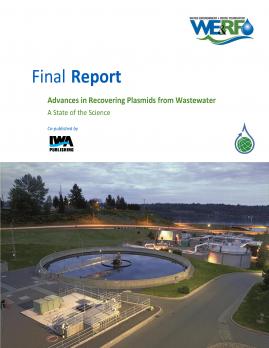 |
Advances in Recovering Plasmids from Wastewater: A State of the Science
Advances in Recovering Plasmids from Wastewater: A State of the Science

Plasmids are small rings of double stranded DNA that are found in all three domains of life: the Bacteria, the Archaea, and the Eukarya. Plasmids encode for proteins that provide their host organisms multiple abilities, such as the ability to transfer genetic information, degrade xenobiotic compounds, resist antibiotics, and outcompete other cells.
This report:
- Provides a description of plasmids in the context of their potential as a resource to be recovered from wastewater.
- Summarizes the literature related to plasmid occurrence and diversity in WRRFs.
- Describes the fate, persistence, and transfer of plasmids in WRRFs.
- Discusses the tools for extraction of plasmid DNA and the approaches (culture-based and sequence-based) for screening the functions encoded therein.
- Proposes a classification scheme for plasmid-related products that facilitates the evaluation of their value as recovered products.
- Envisions a pathway forward for the future development of recovering plasmids from wastewater, detailing steps for short-term, mid-term, and long-term action.
Project Number: NTRY8R15a
Publication Date: 15/09/2016eISBN: 9781780408545Pages: 50 |
Print:
|